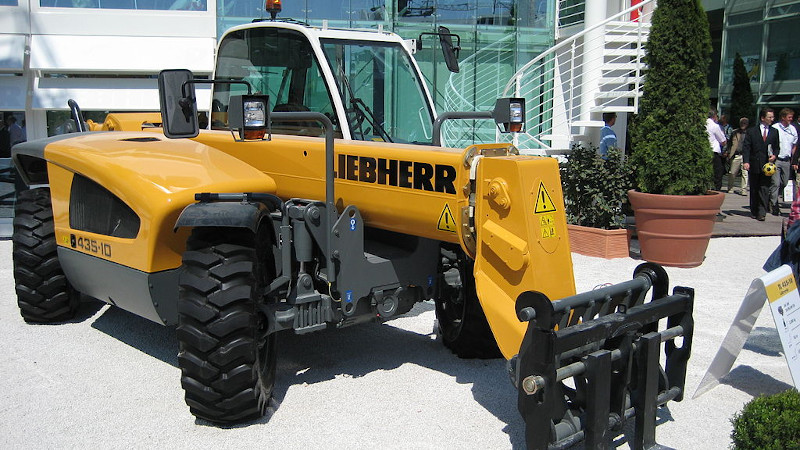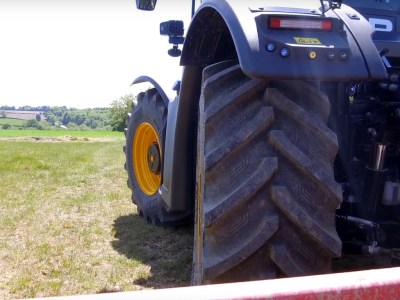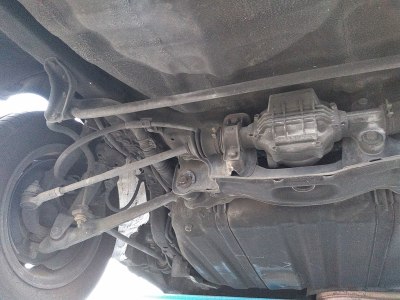Four Wheel Steering, Always The Option, Never The Defining Feature

A couple of weeks ago when it emerged that a new Tesla might have a four-wheel steering capability, our colleague Dan Maloney mused aloud as to how useful a four-wheel steering system might be, and indeed whether or not one might be necessary at all. This is hardly the first time four-wheel steering has appeared as the Next Big Thing on the roads. It’s time to take a look at the subject and ask whether it’s an idea with a future, or set to go the way of runflat tyres as one of those evergreen innovations that never quite catches on.
What’s your dream vehicle? If you’re like me, you have more than one. There in my lottery-winner’s garage, alongside the trail bikes and the mobile hackerspace, the dictator-size Mercedes and the Golf Mk1, will be a vehicle that by coincidence has four-wheel steering. The JCB Fastrac is a tractor that can travel across almost any terrain at full speed, and though I have no practical use for one and will never own one, I have lusted after one of these machines for over three decades. Their four-wheel steering system is definitely unusual, but that makes it the perfect vehicle with which to demonstrate four-wheel steering.
Four-Wheel Steering Where It’s Really Useful

The Fastrac has two axles, and in four-wheel steering configuration the rear axle has steering pivots as well as the front. It doesn’t have a steering box in the same way as a car, instead steering is entirely hydraulic and fly-by-wire. For this reason the top speed is software-limited by law, but the early ones without this annoyance could do motorway speeds. It is after all the world’s fastest tractor.
This steering system is computer controlled, and as such has a variety of modes. There is a mode for tight turns in which front and rear axles pivot in opposite directions, one for sideways movements in which they pivot in the same direction, and even specialist modes such as one in which both front and rear wheels follow the same track when following tram lines in a crop. This lets a giant tractor with huge wheels nonetheless move around in quite small spaces.
… And Where It Isn’t Quite So Much
The tractor makes a great introduction to four-wheel steering, but outside that specialist environment how would it apply to a more normal vehicle? Back in the 1980s there were a slew of 4WS-equipped cars from major manufacturers exploring the market. Probably the most famous example is the third-generation Honda Prelude on which it was an optional extra. This vehicle had an all-mechanical system with an extra steering box at the rear and was driven by a shaft, which makes it an easy-to-understand exemplar.
It’s pretty obvious how any trick to deliver a tighter turning circle would be extremely useful in a crowded parking garage, so pivoting the axles in opposite directions at low speeds is a desirable trait. Meanwhile at high speeds, changing lanes on a motorway could be made more stable by pivoting the axles in the same direction.

The Honda achieved the feat of delivering both steering configurations in one, by the clever use of an epicyclic gearbox for the rear steering. A slight turn of the steering wheel would set the rear wheels pivoting in the same direction as the front allowing it to drift sideways at speed, while further turns would move them round to the opposite direction from the front in order to reduce the turning circle. The dramatic effect on its turning ability is extremely evident in the video linked above, but as an expensive option on the standard Prelude it didn’t tempt enough customers to be made a fixture on later cars.
The story of the Prelude with its interesting steering system that didn’t catch on is the one that has put four-wheel steering in the scrapyard of automotive ideas for every manufacturer that has toyed with the idea since. It’s analogous to 3D cinema: an idea that comes around every few decades as the Next Big Thing, only to fade away soon afterwards. The Honda and its 1980s cohort remain only as interesting curiosities. Will the Tesla do the same? The answer lies in looking again at the Fastrac, it remains a volume-selling 4-wheel steered vehicle because the steering brings something of use to its customers over a conventional 2-wheel-steered tractor. The challenge facing Tesla, or any other manufacturer tempted to give it a try, is to find that elusive usefulness, otherwise they’ll find out as Honda did that consumers prefer to spend their money on something more substantive to boast about.
Header image: Aconcagua, CC BY-SA 3.0.
Post a Comment